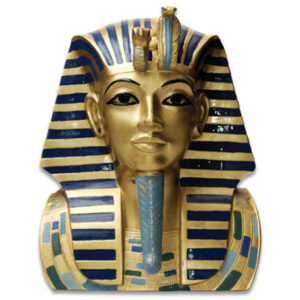The man… the myths… the legends.
Entrance to King Tut’s tomb discovered 100 years ago!
Last updated:
As 1922 neared its end, a team of intrepid explorers led by British archaeologist Howard Carter discovered a step in Egypt’s Valley of the Kings. It was a groundbreaking discovery – at the time, little was known of King Tutankhamen, and most of ancient Egypt’s tombs had already been discovered.
Found at the start of November 1922, by the month’s end Carter and Lord Carnarvon, who was backing the expedition, set foot into the tomb’s interior chambers. Thus began an excavation project of epic proportions!

The Curse of King Tut’s Tomb
When Tutankhamen’s tomb was discovered in 1922, it was a common belief that anyone who disturbed the tomb of a Pharaoh would be cursed. After Carter’s team entered the tomb of King Tut, people wondered – would they fall victim to the curse? Of the 58 people who were there to witness the opening of the sarcophagus, only 8 would pass within the next 12 years. Over time, the “cause” of the curse has fallen away from any mysterious deaths that may have occurred. Instead, it’s now thought to be the product of sensational journalism intended to deter would-be looters.
A look at royal life in Ancient Egypt
In all, it took several years for the archaeological team to fully explore and catalog the “boy king’s” four-room tomb. It was remarkably intact, and gave researchers an incredible look into the splendor of King Tut’s reign. His tomb’s antechambers were packed floor to ceiling with items intended to accompany Tut in the afterlife – including chariots, weapons, furniture, clothes and walking sticks.
The top find, however, was the coffin of Tutankhamen himself. It lay within a stone sarcophagus, which contained three coffins, each nestled inside of another. The final coffin, which held King Tut’s mummified remains, was crafted from solid gold.

Having been preserved for more than 3,000 years, King Tutankhamen’s remains also had plenty of information for researchers to unlock.
Who was King Tut?
Tutankhamen was crowned as Egypt’s pharaoh in 1,332 B.C. when he was just nine years old. During his reign, he reversed several turbulent religious reforms that had been put into place by his father, Akhenaten. King Tut ruled for around a decade, dying when he was around 18.
At the time of his mummy’s discovery, technology didn’t exist to truly know what caused his death at such a young age. Of course, as studies have continued over the last century, we’ve learned that Tut had an infection in a broken leg at the time of his death. In addition, he was physically frail, with a host of ailments that included multiple malaria infections, a crippling bone disease and a clubbed foot.
Today, the remains of King Tut – along with multiple artifacts, including his famed gold death mask – are on display in Egypt.
This article was written by Kierstin S.
Since 2000, Kierstin has enjoyed sharing her love of collecting with folks like you.



